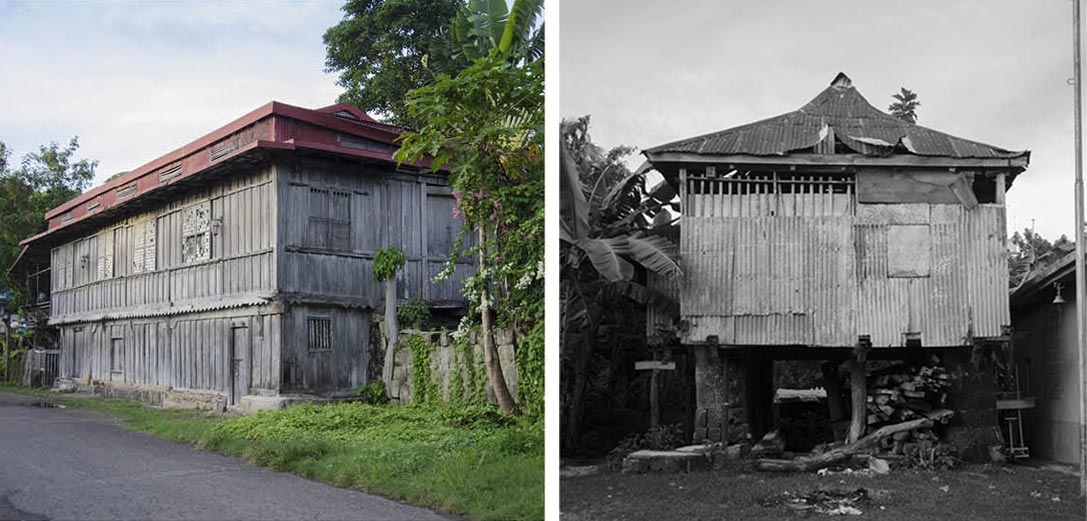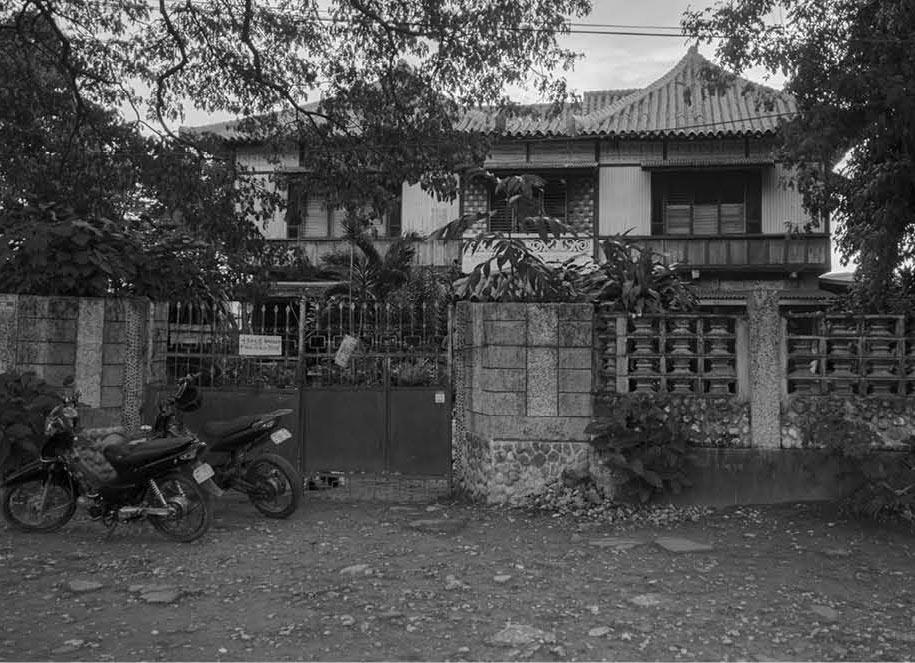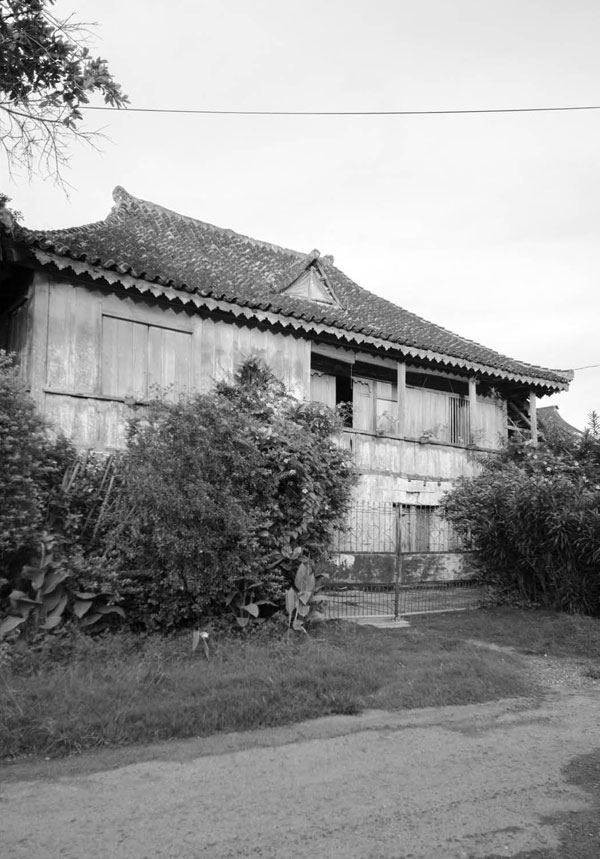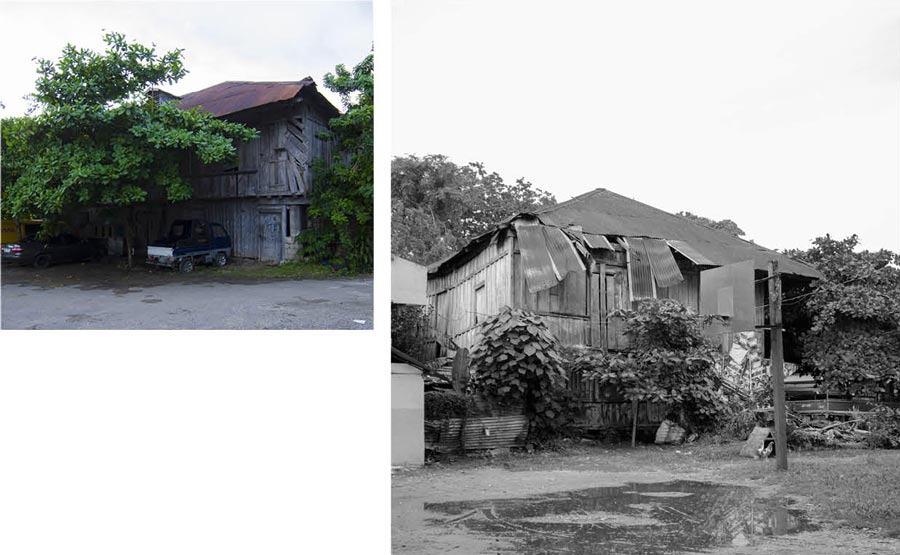
Sitio Ubos: What remains when heritage conservation fails
Sitio Ubos stands as a monument of failed conservation planning, a victim of disjointed initiatives by the private and public sectors. The historic town forms a unique ensemble of 19th-century bahay na bato, the oldest ones in Bohol. The 1.7-hectare district, which used to be Tagbilaran’s old wharf, enjoyed its heyday in the early to mid-19th century when wealthy merchants of Chinese-Mestizo ancestry built massive houses of stone, wood and tiles near the sea.
However, the turn of the 20th century saw the gradual decline of Sitio Ubos, when the newly built causeways to Panglao Island effectively blocked vital shipping lanes through the Strait of Panglao. The district’s demise accelerated when businesses moved up to the plateau behind the capitol. As in many other provincial centers, the years following World War II saw the gradual out-migration of the former elite families to Manila and overseas, leaving their ancestral houses vacant or entrusting them to caretakers. Soon, informal settlers arrived and blanketed the seafront with makeshift structures while the grand old houses fell into disrepair, some insensitively renovated and others eventually demolished.

The plan that never was
The fate of Sitio Ubos reached a turning point in 2002 when the 1820s Butalid House, the oldest in Bohol and situated on a cliff overlooking the Panglao Strait, finally succumbed to decades of gross neglect. The house collapsed and its remnants were taken apart and sold piece by piece to an antique dealer. News of the loss served as a wake-up call for local authorities. In the same year, the city government of Tagbilaran declared Sitio Ubos a “cultural heritage area,” the first in Bohol to be designated such, which marked the beginning of promising developments. American conservation architect Charles Chichester of the International Council on Monuments and Sites (ICOMOS) USA took notice and developed the Sitio Ubos Preservation Plan in 2002 by as part of the wider Bohol Cultural Development Plan, with a Heritage Zone Plan written by architect Augusto Villalon of ICOMOS Philippines. The Sitio Ubos Plan provided for a Tourism Information Center, an archaeological excavation, and a “Tagbilaran Heritage Walk” planned by the Center for Culture and Arts Development (CCAD) of the provincial government, to be undertaken between 2004 and 2009.
READ MORE: Ioilo’s Calle Réal shows Escolta how heritage CBD restoration is done

In April 2005, architecture dean German Torero of the University of Bohol restored the Casa Rocha-Suarez, converting it into a lifestyle museum-cum-heritage center in partnership with various cultural institutions. Meanwhile, the neighboring Antonio Rocha House was bought and renovated by prominent period furniture maker Omeng Esguerra. The historic stairway once connecting the district to the plateau was partially reconstructed. At the same time, a handicraft center was established through a partnership between a prominent local family and the Ayala Foundation, which built an open-air compound surrounded by thatched single-storey bamboo structures. The center was intended as a venue where locally produced handicrafts would be sold, and where dance and cultural presentations would be held.
The cultural and tourism underperformance of Sitio Ubos despite its immense potential illustrates the recurring difficulty of sustained rehabilitation if private investments are not coordinated with or systematically supported by public initiatives and investment.
Sadly, most of these promising endeavors proved unsustainable over time. The Sitio Ubos Preservation Plan was never implemented due to political differences between the provincial and the city government leaders at that time. The planned Heritage Walk was put together only in 2015. The archaeological diggings likewise never materialized, while the handicraft center, though built, never took off and was soon dismantled. According to locals, the handicraft center was rarely used, only a few shows were ever staged, and no handicraft seller ever showed up. The project was subsequently abandoned due to internal disagreements between its benefactors. The Rocha-Suarez House likewise never developed into the vibrant heritage center its private developers intended it to be. The museum has since been closed, and the house is again showing signs of deterioration. Meanwhile, the historic Yap house continues to disintegrate, its open gallery and staircase now largely gone. Even the plain signboard put up by the local government in 2002 declaring the district a heritage area has vanished. Many tourism operators in Bohol have not been helpful; some even extort tourism site managers for kickbacks and shun the destinations if they refuse to pay. Sitio Ubos remained a blighted quarter of the city.
Disjointed incrementalism
The cultural and tourism underperformance of Sitio Ubos despite its immense potential illustrates the recurring difficulty of sustained rehabilitation if private investments are not coordinated with or systematically supported by public initiatives and investment. Urban rehabilitation is a difficult, complex, and long process, requiring consultations with many private and public stakeholders, especially when, as in Sitio Ubos, it involves the relocation of informal settlers, a common problem in most Philippine urban centers. Initiatives need to be integrated and synchronized with other private and public investments to create sufficient momentum for change, as isolated activities are seldom sustainable on their own.

The government too has to invest substantial funds into rehabilitation projects, either directly through subsidies, grants, and soft loans, or indirectly through tax and fee concessions. Areas of responsibilities and extent of competency of involved municipal, provincial, and national government agencies, which also need to coordinate their activities, have to be clearly defined to avoid overlapping jurisdictions and blind spots. Heritage information and appreciation campaigns for local residents and the provision of technical and managerial expertise are essential, as was successfully done in Vigan, Ilocos Sur. Protective ordinances need to be clearly formulated and defined, construction and demolition permits reviewed with regard to RA 10066 or the National Cultural Heritage Act of 2009, and appropriate sanctions for violations (e.g., monetary fines or jail terms) imposed and enforced. Specific local building codes designed for heritage districts also need to be crafted and implemented.
Living museum
Despite the non-implementation of the 2002 conservation plan and its continuing decay, Sitio Ubos still holds tremendous potential. Its location is ideal, almost in the city center of Tagbilaran, just a few steps away from the plaza with the cathedral and the Capitol, now restored and converted into the National Museum’s Bohol branch. The present commercial center of Tagbilaran is likewise only 10 minutes away by foot. Moreover, the district is located directly along the main bridge, which connects Tagbilaran to the island of Panglao, which is famous for its beaches and resorts. Most tourists traveling to and from Panglao pass right in front of the district. The sitio used to command a magnificent view of the Strait of Panglao and the historic Dauis Church with its convent and watchtower across the island.

Urban rehabilitation poses complex and difficult challenges, which can be addressed with vision and political will. Just imagine if the heritage structures in Sitio Ubos had been carefully preserved or faithfully restored while modern structures unsympathetic to them had been removed or remodeled to be respectful of the historic setting. Some of the houses could be converted into well-curated museums filled with artworks and rare period furniture like the Ah Tay bed. Unlike the Casa Rocha-Suarez, which required visitors to book an appointment, the restored houses should be open for walk-in visitors throughout the day. If not museums, the houses can be adaptively reused into artsy cafés or restaurants, perhaps with al fresco dining on a terrace facing the sea, where guests can sample Boholano specialties such as broas, peanut kisses, and a cup of sikwate (hot chocolate) or local corn coffee. Aside from the houses, the surrounding public space needs to be cleaned up, streets paved or cobblestoned, obstructive infrastructure like electrical posts and signages removed, street lighting and furniture installed, and endemic trees planted for shade. Above all, informal settlers should be integrated elsewhere in the city to clear the seafront and restore its magnificent view.
Institutionally, much remains to be done. The municipal government should not only implement its own Ordinance C107 of 2002, which prohibits activities that deface, change, alter and destroy historical places, but also provides tax incentives to owners of heritage houses, a policy successfully introduced in Angeles City, Pampanga. In turn, Sitio Ubos could become a veritable cash cow for the city government, with a flourishing tourism and culture industry creating not only employment and livelihood, but also increased revenues through business, income, and property taxes (from improved sales and market values), fees, and licenses.

Overdue declaration
Repeated attempts to draw the attention of the then National Historical Institute to Sitio Ubos for declaration as a national heritage site yielded no results. Such formal declaration could open the gates for much-needed funding and technical support for the sitio’s maintenance and restoration. However, apart from calling attention to the decrepit state of the district, the story of Sitio Ubos aches to be told because it is the same story we see in heritage districts elsewhere like Escolta, which despite efforts by concerned citizens and private sector groups, fall way short of their potential. Such initiatives provide a glimmer of hope if we can only bring ourselves to work together under a single vision and follow through with what we planned and started. ![]()
This article first appeared in BluPrint Vol 4 2016. Edits were made for Bluprint.ph.
READ MORE: The Hope for our Heritage: 3D Scanning Manila


